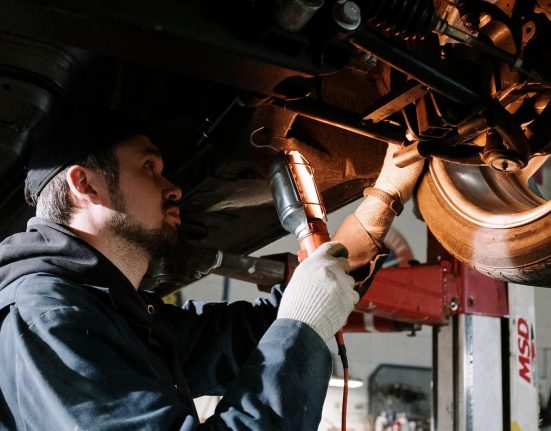Maintenance Requirements for the FK-4020 Fiber Laser Cutting Machine Torch Head Sensor
The FK-4020 fiber laser cutting machine is a highly efficient and precise tool used in various industries for cutting materials. One of the crucial components that ensure its optimal performance is the torch head sensor. The sensor plays a vital role in detecting the distance between the cutting head and the material, ensuring high-quality cuts and preventing damage to both the machine and workpiece. Regular maintenance of the torch head sensor is essential to ensure the machine operates efficiently and without interruption. In this article, we will explore the maintenance requirements of the FK-4020 fiber laser cutting machine torch head sensor in detail, offering valuable insights for users to prolong the lifespan of their equipment and maintain its performance at the highest standard.
Importance of the Torch Head Sensor in Fiber Laser Cutting Machines
The torch head sensor in a fiber laser cutting machine is integral for the precision and safety of the cutting process. It is responsible for maintaining a consistent focus on the laser beam, preventing the nozzle from touching the material directly, and ensuring a clean cut. The sensor monitors the height of the cutting head and adjusts it to the ideal distance from the surface of the material, compensating for any fluctuations in material thickness. This functionality ensures that the laser is focused optimally, preventing issues like incomplete cuts or material damage, and reducing the risk of machine failure.
Key Maintenance Requirements for the Torch Head Sensor
Regular maintenance of the torch head sensor is essential to prevent malfunctions that can lead to costly downtime or quality issues. Here are the main maintenance requirements:
1. Regular Cleaning of the Sensor
Over time, dust, debris, and soot can accumulate on the sensor, hindering its ability to detect the proper distance between the cutting head and the material. Cleaning the sensor regularly ensures that it remains free from obstructions that could affect its accuracy. Use a soft cloth or a suitable cleaning tool to wipe down the sensor’s surface, avoiding any harsh chemicals that could damage it. Ensure that the machine is turned off before performing any cleaning procedures.
2. Calibration Checks and Adjustments
It is important to check the sensor’s calibration periodically to ensure that it is functioning correctly. If the calibration is off, the machine might experience cutting inaccuracies, such as poor cut quality or inconsistent material thickness detection. Perform calibration checks according to the manufacturer’s guidelines, and adjust the sensor if needed. This process is typically carried out by skilled technicians familiar with the equipment’s specifications.
3. Inspecting the Wiring and Connections
The torch head sensor relies on a network of wires and connectors to send and receive signals. Over time, these connections may become loose or damaged, which can cause the sensor to malfunction. Regularly inspect the wiring for any signs of wear or loose connections. If any issues are found, they should be promptly addressed to prevent further damage. Ensure that all connections are secure and that no cables are pinched or frayed.
4. Checking the Sensor’s Sensitivity
The sensitivity of the sensor is crucial for accurate distance detection. If the sensor becomes too insensitive or overly sensitive, it may misjudge the distance, resulting in inconsistent cuts. Periodically check the sensor’s sensitivity and adjust it according to the manufacturer’s recommendations. If the sensor is not functioning as expected, it may require replacement or calibration to restore its optimal performance.
5. Monitoring the Laser Focus
The sensor ensures that the laser focus is maintained at the correct distance from the material. If the focus is off, the quality of the cut will be affected. Regularly monitor the laser focus and ensure that the sensor is correctly positioning the torch head to maintain an optimal focus. Misalignment of the laser focus can lead to defects like excessive heat marks or incomplete cuts, which can be costly to fix.
6. Replacing Worn or Damaged Components
Like all mechanical parts, the torch head sensor and its components will eventually wear out or become damaged. Regularly check for signs of wear and tear on the sensor and replace any parts that show signs of damage. This includes inspecting the nozzle, lens, and other parts that interact with the sensor. Promptly replacing damaged parts ensures that the machine continues to perform at its best.
Best Practices for Long-Term Maintenance
Maintaining the FK-4020 fiber laser cutting machine’s torch head sensor requires attention to detail and regular upkeep. By following these best practices, users can maximize the performance and longevity of their equipment:
1. Follow Manufacturer Guidelines
Always adhere to the manufacturer’s maintenance instructions. These guidelines are tailored to ensure that the sensor and other components are cared for properly. The manufacturer may provide specific recommendations for cleaning, calibration, and parts replacement that should be followed to maintain the machine’s performance.
2. Regular Inspections
Perform regular inspections of the entire cutting system, not just the torch head sensor. This will help identify potential issues before they become serious problems. Regularly check all components, including the laser module, cooling system, and electrical connections, to ensure they are functioning optimally.
3. Utilize Skilled Technicians
While some maintenance tasks can be handled by the operator, more complex tasks such as calibration and sensor adjustments should be performed by skilled technicians who are familiar with the FK-4020 machine. Their expertise ensures that the sensor is correctly maintained and that the machine continues to operate at its highest capacity.
Conclusion
Proper maintenance of the FK-4020 fiber laser cutting machine’s torch head sensor is essential for ensuring the machine operates efficiently and provides high-quality results. By regularly cleaning the sensor, calibrating it, inspecting connections, and monitoring the laser focus, users can prevent costly repairs and downtime. Following best practices and manufacturer guidelines, along with utilizing skilled technicians for more complex tasks, will help prolong the lifespan of the equipment and maintain optimal performance over time.














